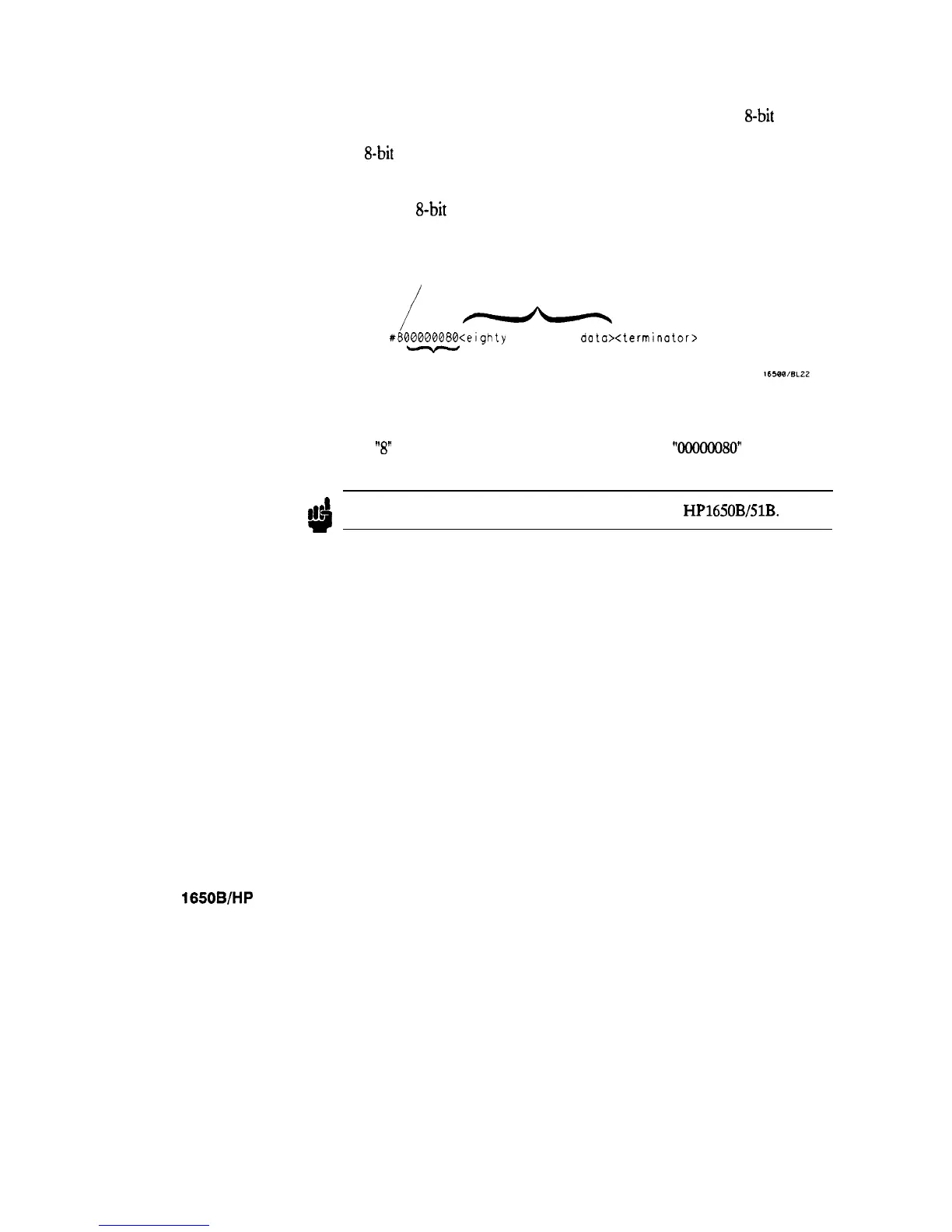Definite-Length Block
Definite-length block response data allows any type of device-dependent
Response Data
data to be transmitted over the system interface as a series of g-bit binary
data bytes. This is particularly useful for sending large quantities of data
or g-bit extended ASCII codes. The syntax is a pound sign ( # ) followed
by a non-zero digit representing the number of digits in the decimal
integer. After the non-zero digit is the decimal integer that states the
number of g-bit data bytes being sent. This is followed by the actual data.
For example, for transmitting 80 bytes of data, the syntax would be:
NUMBER OF DIGITS
THAT FOLLOW
ACTUAL DATA
/
-
#800000080<elghty
bytes of
data><terminator>
NUMBER OF BYTES
TO BE TRANSMITTED
Figure 1-3. Definite-length Block Response Data
The
“8”
states the number of digits that follow, and
‘WOOOO80”
states the
number of bytes to be transmitted.
’
Note
!!b
Indefinite-length block data is not supported on the HP1650B/51B.
HP 1650B/HP 16518
Programming Reference
introduction to Programming an Instrument
1-17
